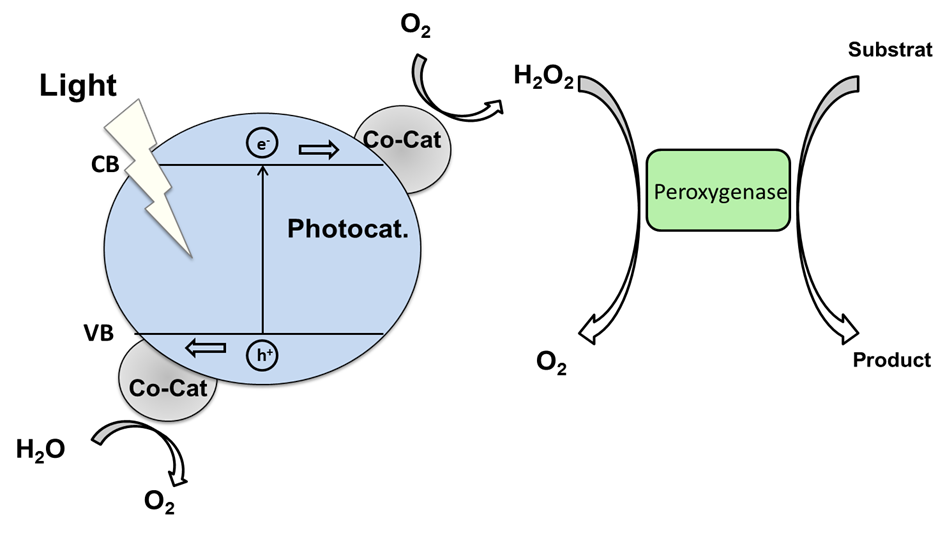
| Period: | 01.11.2019-30.04.2023 |
|---|---|
| Funder: |
Deutsche Forschungsgemeinschaft (DFG) Funding code: BL 1425/1-2 |
| Project Manager: | Deborah Wegstein |
| Division: | Chemical Technology |
| Team: | Photocatalysis |
Enzymes such as oxidoreductases are powerful tools for the synthesis of complex organic compounds as those catalysts enable highly selective, efficient and therefore sustainable reactions. However, due to the need for expensive and complex cofactors, the use of enzymes in industry is often limited.
The enzyme class of peroxygenases has the advantage of being able to use hydrogen peroxide (H2O2) as an economically prized and easily synthesizable cosubstrate. However, the major challenge for an application of those enzymes is their instability against said hydrogen peroxide. An elegant solution for this issue is the in-situ generation of H2O2 in the sub-millimolar concentration range. This can be achieved via photocatalytic reduction of oxygen to H2O2.
In a preceding project titanium dioxide (TiO2) was extensively investigated as photocatalyst for this purpose. It turned out that photocatalytically generated hydroxyl radicals as well as the UV-light required for charge carrier generation in TiO2 strongly inactivate the enzymes.
The aim of the current project is to develop strategies to prevent the formation of those radicals while still producing H2O2 in sufficient quantities, ideally using the less energetic visible light.
To reach these goals, various photocatalyst systems will be examined and, suitable candidates will be investigated for the application in photoenzymatic catalysis as presented in the scheme.
